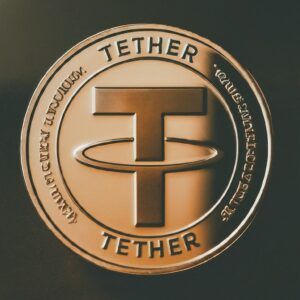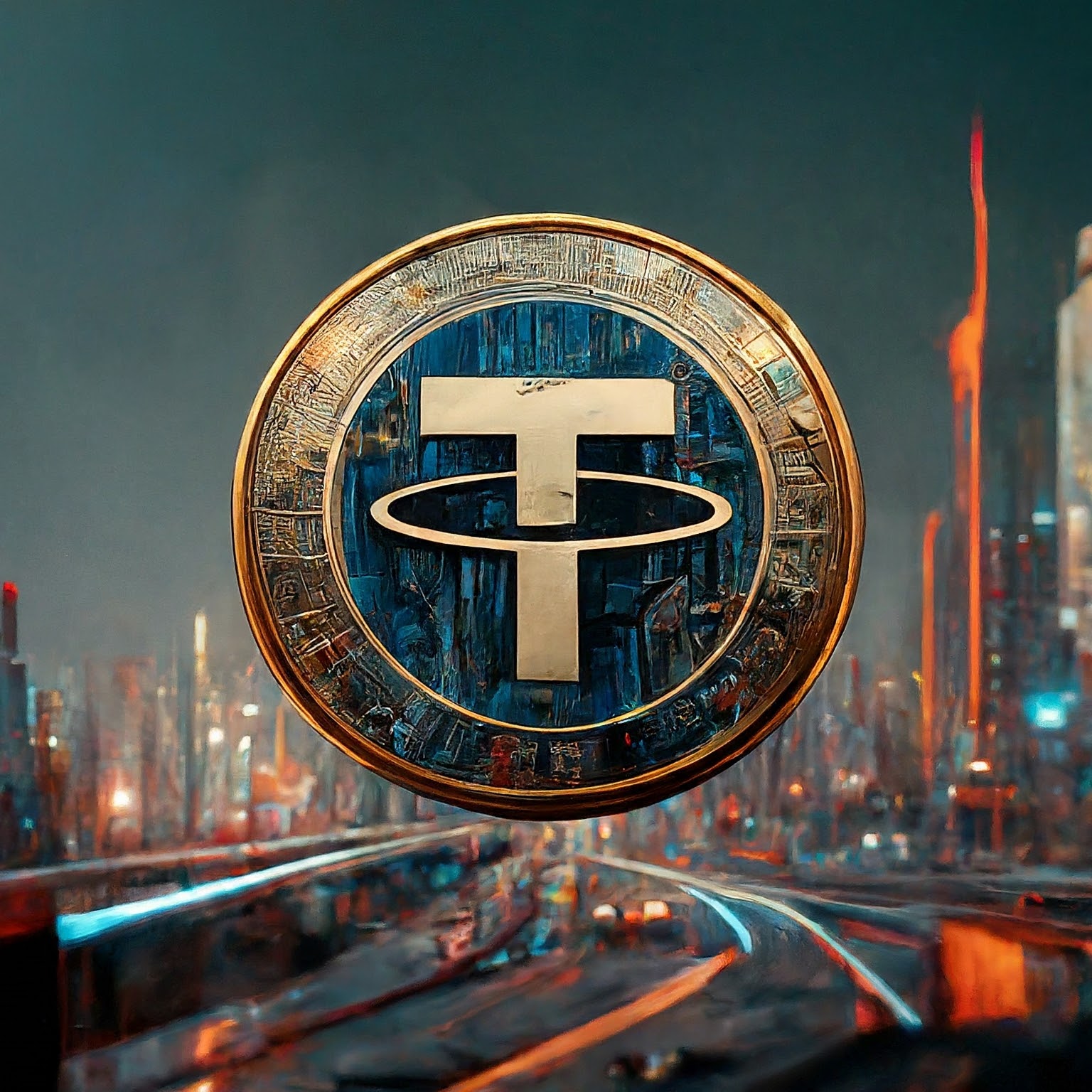I’ve explained the top two cryptocurrencies in terms of the worth of a single coin as well as its market capitalization and those two are Bitcoin and Ethereum. After that, the worth of a single crypto token doesn’t come into play as now we have to look at market cap, and in terms of that, Tether comes in at the third largest cryptocurrency out there, but there’s something quite a bit different with Tether than most other digital tokens out there. You may or may not have heard of stablecoins so I’m going to break that down for you, but there is a question that comes up: Is Tether a stablecoin? The answer is yes.
I’m going to break down what stablecoins are because, let’s face it, cryptocurrency can feel like a wild ride, right? This isn’t just about Bitcoin and Ethereum; there’s an entire ecosystem at play, and stablecoins are a crucial piece of that puzzle. Imagine you’re trying to transfer funds or settle a payment but without the heart-stopping volatility of typical cryptos. That’s where stablecoins come in.
You’re going to find out about the different kinds of stablecoins and what backs them up. Some are pegged to fiat currencies like the US dollar, while others might be backed by commodities or even other cryptocurrencies. And there’s also an interesting breed that relies on algorithms to keep their value stable.
These digital assets are pivotal because they provide a semblance of stability in a category known for its rapid value changes. Merchants, investors, and everyday users benefit from stablecoins since they bridge the gap between fiat currency’s reliability and cryptocurrency’s innovation and speed.
Now, that’s a ton to digest, but you can always adjust your understanding as you learn more. Next, I’m going to introduce you to Tether, one of the first players in the stablecoin space, and quite a significant one at that.
Tether (USDT): An Introduction to the Pioneer Stablecoin
Now, let’s zoom in on Tether, often known as USDT. It burst onto the scene back in 2014, making it one of the earliest stablecoins in the cryptocurrency world. What sets Tether apart is its claim of being pegged to the US dollar on a 1:1 basis, meaning in theory, for every Tether out there, there’s a US dollar sitting in a reserve.
I’m going to break down the tech talk: Tether operates on various blockchains through the magic of digital tokens. This means that Tether isn’t limited to just one blockchain – it’s got a multi-chain presence, which includes heavy-hitters like the Bitcoin (via the Omni Layer Protocol), Ethereum, EOS, Tron, Algorand, and more. I will talk about each one of those cryptos at another time.
This isn’t just about Tether existing in different places; it’s also about it being a bridge between fiat and cryptocurrencies. By blending the stability of the dollar with the efficiency of digital currencies, Tether has become a cornerstone in crypto exchanges, often used for trading and as a haven in times of market turmoil. 
The solidity of Tether’s peg lies in the maintenance of its dollar reserves. Tether claims that its reserves are equal to the number of USDT in circulation, assuring its value. Users theoretically should always be able to swap back their Tether for a corresponding amount of dollars.
In my opinion, it’s crucial to understand the technological infrastructure and the reserve claims that make Tether unique. This foundation not only supports its stability but also helped pave the way for the rising popularity we’re going to touch on next.
Why Is Tether the Third Largest Cryptocurrency by Market Cap?
I’m going to paint a clearer picture for you about why Tether, commonly known by its ticker USDT, stands tall as the third largest cryptocurrency in terms of market capitalization. Market cap—in the most basic terms—is the total value of all coins in circulation multiplied by the current market price. For Tether, which largely maintains a price of $1, this calculation gives us a direct representation of its circulating supply.
So, why does Tether enjoy such a massive market cap, frequently outpacing its competitors? One word: trust. Despite controversies, a lot of investors and traders turn to Tether for its relative stability and the significant presence it has in the cryptocurrency markets. It’s a preferred medium for moving funds between different cryptocurrencies or cashing out profits, all while minimizing the risk of price fluctuations during the transfer process.
You’re going to find out about liquidity too. Tether provides a liquidity that’s essential in the fast-paced world of crypto trading. It’s widely integrated on numerous exchanges, and due to its high demand in trading pairs, it ensures ease of trading and accessibility. These qualities contribute to a higher trading volume which, in turn, helps bolster its market cap.
In my opinion, it’s not just the practical uses of Tether that pump up its market cap; Tether has profoundly influenced how people perceive and utilize cryptocurrencies. It has become a cornerstone in the evolving architecture of digital finance, influencing the very dynamics of crypto trading.
Choose something that resonates with you—whether that’s investment security, ease of transaction, or simply aversion to risk. For many, that choice is Tether, which provides a sense of stability amidst the roller coaster ride of cryptocurrency values. That sense of assurance is what brings Tether to the forefront of the crypto economy.
The Controversies and Debates Surrounding Tether
Tether holds a unique and controversial spot in the world of cryptocurrencies. It’s been embroiled in debates concerning the legitimacy and transparency of its backing reserves. Critics argue that without full, independent audits, the true stability of Tether remains uncertain.
Moreover, Tether’s issuer has faced legal actions, including a settlement with the New York Attorney General’s office, which raised questions about its trustworthiness. These controversies affect not just Tether but the entire crypto market; during times of legal turbulence for Tether, increased volatility often ripples through the market.
 The crypto community has been vocal about Tether, with some seeing it as an essential cog in the market, facilitating large volume trades and providing a stable medium of exchange. Others, however, remain skeptical, urging for greater accountability and advocating for a move towards more regulated and transparent stablecoins.
The crypto community has been vocal about Tether, with some seeing it as an essential cog in the market, facilitating large volume trades and providing a stable medium of exchange. Others, however, remain skeptical, urging for greater accountability and advocating for a move towards more regulated and transparent stablecoins.
Transparency and accountability are essential for maintaining trust in any financial system, and the stablecoin market is no exception. To that end, the calls for standardized and rigorous audits of stablecoins like Tether signal a maturing market demanding higher industry standards.
As we transition into our next section, consider this: The future of stablecoins may well depend on the lessons learned from Tether’s challenges and the response of regulators worldwide. Will Tearer’s dominance persist, or will it pave the way for a new kind of stablecoin ecosystem? Let’s explore what Tether’s dominance indicates about the path ahead for this intriguing and vital sector of the crypto world.
The Future of Stablecoins: What Tether’s Dominance Tells Us
I’m going to reflect on what the story of Tether could mean for the future of stablecoins. Tether’s impressive market cap is a strong indicator of the integral role stablecoins play in the crypto economy. It shows a growing trust among investors and everyday users in using digital currencies pegged to traditional assets.
Regulations are coming, and they’re going to bring change. Tether, given its size and influence, might face more scrutiny, which could either strengthen its dominance or compel adjustments in its operation. It’s a wait-and-see scenario, but the outcome will set a precedent for other stablecoins.
Innovation doesn’t pause. So you can bet Tether’s success will inspire new stablecoins that might offer better transparency, improved technology, or even tie to other assets like commodities or baskets of currencies. This isn’t just about Tether; it’s also about the continuous evolution of cryptocurrency.
You’re going to find stablecoins increasingly intersect with other financial systems and services. From cross-border payments to lending platforms, the potential for integrated financial solutions is vast and exciting. 
Choose something that resonates with you, but remember, Tether’s journey is a powerful reminder to always consider stability, trust, and transparency when exploring the world of cryptocurrencies. Do your research, be aware of regulatory changes, and stay informed – your financial empowerment in the digital age depends on it.
Tether does have some competition coming. The crypto company Ripple announced earlier this year that they are coming out with a stablecoin of their own and this is quite significant because, unlike Tether, Ripple has a HUGE amount of partnerships and alliances with major banks and other financial companies across the world. More on that will be coming soon.
I really haven’t done much with stable coins at this time, but I did recently use Tether when I went to cash out some of my crypto on a crypto exchange. I just sold the crypto onto Tether and then from there cashed it out into my bank (I really meant to cash it out to my bank from the get go and didn’t realize at first that the cash out method was to Tether). I must say though, I can see myself using Tether more in the future because since it is a stable coin that is backed by the US Dollar, I don’t have to worry about the volatility of other cryptos as mentioned above. If times get really tough for crypto, Tether provides a place for stability until you’re ready to get back into crypto game.

